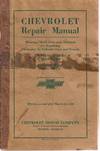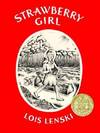

The Process of Calotype Photogenic Drawing, Communicated to the Royal Society, June 10th, 1841.
by TALBOT, William Henry Fox
- Used
- first
- Condition
- See description
- Seller
-
London, United Kingdom
Payment Methods Accepted
About This Item
London.: Printed by J. L. Cox and Sons., 1841.. Loose as issued, later morocco-backed portfolio.. 4to. (229 x 182 mm).. Leaf with drop-head title and note above opening text, printed text recto and verso on following leaves, folded as issued. The rare first edition of the first announcement of William Henry Fox Talbot's calotype method - the negative / positive photographic process - the most important innovation in the history of photography.
Although Talbot had announced his researches and progress in the field of what was to become photography in his 1839 lecture to the Royal Society ('Some Account of the Art of Photogenic Drawing ... &c.'), that lecture, although ground-breaking, dealt largely with the achievement of an image on treated paper and only alluded briefly to the possibility of a more versatile development. It was not until his 1841 lecture to the same body (the title as per the present publication is 'The Process of Calotype Photogenic Drawing ... &c.') that the details of his refinements, and most particularly his successes with the negative / positive process, were delineated. Those successes and Talbot's development of the resultant negative / positive process for photographic reproduction and duplication remained the predominant methodology in the field for more than 150 years; all subsequent refinements, whether in the chemicals used, differing methods for image capture, printing and so on, were merely variations on Talbot's original scheme. Talbot had patented his method in secret (he was awarded 'Her Majesty's Royal Letters Patent No. 8842') in February 1841, prior to his lecture to the Royal Society, concerned by Arago's announcement of Daguerre's discoveries, the efforts of Hippolyte Bayard and the priority of his own work.
'In 1841 William Henry Fox Talbot announced an improvement of his photogenic drawing process, which he named 'calotype' (from the Greek, meaning 'beautiful picture'). Previously he had allowed his sensitized paper to remain exposed to light until an image became visible. He now made a remarkable discovery: a much shorter exposure so changed the characteristics of the silver salts that they could be reduced to silver by chemical after-treatment. This principle of the 'development of the latent image' is basic to most subsequent photographic processes ... To make a calotype negative, Talbot bathed a sheet of paper in two solutions, one of silver nitrate, the other of potassium iodide ... After exposure the paper was bathed again in this solution [a mixture of gallic acid and silver nitrate] which acted as a physical developer and gradually brought out the image ... He printed them [the resultant negative] with his original silver chloride paper.' (Beaumont Newhall).
'Privately printed for the author for distribution to friends and editors.' (Gernsheim).
'Between 1835 and 1839, Talbot and Henneman continued their experiments, motivated by a desire ... for reproducing images from nature. Following Arago’s announcement to the Académie des Sciences 7 January 1839 of the existence of Daguerre’s photographic process, Talbot became concerned over the priority of his work; he frantically sought to improve his process prior to the disclosure of Daguerre’s ... In 1840 Talbot would develop a latent image on paper, and he called this new process the calotype. He patented and then disclosed the process in a paper presented to the Royal Society in June of 1841 ... '. (DSB).
Talbot's document is scarce: COPAC locates no copies in the UK and the catalogue for the British Library reports no example; OCLC lists two copies in Germany (at Marburg and Stuttgart's Staatsgalerie) and four in the US (at Syracuse, Columbia, Harvard and Princeton).
The document was reprinted with an altered title ('The Process of Talbotype (formerly called Calotype) Photogenic Drawing ... &c.) in 1846.
[Gernsheim 655; see Beaumont Newhall's 'The Calotype: The Pencil of Nature' in 'The History of Photography', New York, 1997, pg. 43].
Reviews
(Log in or Create an Account first!)
Details
- Bookseller
- Sims Reed Rare Books
(GB)
- Bookseller's Inventory #
- 48243
- Title
- The Process of Calotype Photogenic Drawing, Communicated to the Royal Society, June 10th, 1841.
- Author
- TALBOT, William Henry Fox
- Format/Binding
- Loose as issued, later morocco-backed portfolio.
- Book Condition
- Used
- Publisher
- Printed by J. L. Cox and Sons.
- Place of Publication
- London.
- Date Published
- 1841.
- Pages
- [Single bifolium: pp. (4)].
- Size
- 4to. (229 x 182 mm).
Terms of Sale
Sims Reed Rare Books
30 day return guarantee, with full refund including original shipping costs for up to 30 days after delivery if an item arrives misdescribed or damaged. Postage will be charged at cost and the buyer will be notified of the exact amount.
About the Seller
Sims Reed Rare Books
Biblio member since 2021
London
About Sims Reed Rare Books
Sims Reed Ltd. (Est. 1978, St James's London) specialises in rare books related to art and architecture and stocks a wide range of material in the following categories: Antiquarian, Illustrated Books, Contemporary Artists' Books & Multiples, Periodicals, Architecture, Photography, Applied Arts, Manuscripts and Ephemera.
Glossary
Some terminology that may be used in this description includes:
- Recto
- The page on the right side of a book, with the term Verso used to describe the page on the left side.
- New
- A new book is a book previously not circulated to a buyer. Although a new book is typically free of any faults or defects, "new"...
- Leaves
- Very generally, "leaves" refers to the pages of a book, as in the common phrase, "loose-leaf pages." A leaf is a single sheet...
- First Edition
- In book collecting, the first edition is the earliest published form of a book. A book may have more than one first edition in...
- Verso
- The page bound on the left side of a book, opposite to the recto page.


